Maybe you’ve heard some of those ever-persistent murmurings about the GeneralMusic S-Series: “The S2 synthesizer – a secret sound weapon”, “GEM S2 and S3 are among the best master keyboards on the market”, “great polyphonic aftertouch”, “some intriguing sounds” … and on and on.
Let’s have a look at that GeneralMusic S-Series. Are these synthesizers from the early 90s as innovative as rumours have it?
GEM: A respectable name in the home organ/keyboard/e-piano market
GeneralMusic unfortunately filed for bankruptcy some time ago. It was among the last Italian keyboard manufacturers, along with Ketron (Solton). The company had grown substantially, especially in the late 80ies / early 90ies. But let’s start even further back and have a look at Crumar first. When the great keyboard & organ manufacturer closed its doors in 1986, it was bought by LEM. The latter was taken over by GEM a few years later, as was ELKA.
1994 GEM changed their company name to GeneralMusic, but kept GEM as a brand. That means that GeneralMusic now hosted GEM, LEM and ELKA. GEM was still a name to take seriously in the portable keyboard, workstation and e-piano market. LEM produced mixing consoles and loudspeakers, while ELKA offered guitar/bass amplifiers and portable p.a. systems.
In the early 90ies, GEM/GeneralMusic had some 500 employees in five locations. The R&D (Research and Development) department alone employed 25 technicians. That’s where, among other things, some of the S-Series custom chips were developed.
The S-Series actually was one of the last products ELKA began. After its collapse in 1988, GEM/GeneralMusic took over the plans and brought the innovative “S” synthesizer project to realization. Sadly, the success of the S-Series was limited, so GEM/GeneralMusic cancelled the whole product line once the Turbokit had been released. A few years later another, very “S”-like synthesizer appeared, the GEM Equinox. It closely resembles the S2/S3 and seems to be GeneralMusic’s last delving into high tech synthesizers.
I bought the GEM Equinox Pro 88 in 2010 and, to be honest, I can tell you the old S2 / S3 is much better (… it’s mainly the quality and originality of the sounds which is much better and a lot more inspiring).
In 2007, GeneralMusic’s product line contained arranger-keyboards, multimedia workstations, e-pianos, mixing consoles, loudspeakers and p.a. systems. But there was a time when the Italian company could easily have competed with any Japanese or American hi-tech synthesizer manufacturer. That was in the days of the S-Series …
Meanwhile, Generalmusic closed its doors. On February 2009, Generalmusic fired all workers and immediately filed for bankrupt which has been declared in 2011. Very sad.
We repeat, GeneralMusic made its first serious move into high tech with the GEM S2/S3 and S2R in 1992. Looking at the S2/S3, they seem like any ordinary sample + synthesis keyboard workstation. But these are professional, genuine synthesizers with some fresh new functions and – best of all – a wonderful sound. Physically speaking, they tote some outstanding features: The enormous, deeply sunken aquamarine LCD, the two moulded (freely programmable) wheels, the masculine 61-note/76-note keyboard, the many panel controls.
Although the panel is crowded with knobs, it doesn’t seem cluttered. Most knobs have a specific function, such as EFF. BYPASS, CLIPBOARD or MIDI OFF. The S-serie’s flexible (open) operating system (called MIOS) lets you move about the instrument in a free-flowing computer-like style.
The early 90ies – birth hour of many respectable S+S workstations
The field of highly professional S+S (sample + synthesis) concepts was quite crowded back in the early 90ies. Actually, the story should start back in 1988 with the all-time classic Korg M1. Its successor, the 01/W, had a bigger screen, more samples, double polyphony and a new “crazy” feature called waveshaping. It remains a very popular workstation up to this day. Roland tried to continue the success of the D-50 and released a PCM sample-based synthesizer called D-70. Sadly, it was too complex to program – a real pain, once you began delving beneath the surface! Yamaha’s SY77 (and its rack version TG77) equally suffered from a too-complex operating system. Although they could have been milestones in synthesizer history (as was the DX7), those wonderfully sounding synthesizers were a pain to operate. Not even the more flexible flagship SY99 was rid of those inherent complexities.
In 1991, Roland’s JD-800 should have been the big seller, but it wasn’t! Too many knobs! People were too easily intimidated by all those sliders and buttons – although synthesizer designers in their turn must have found it pretty nerve-wracking, trying to figure out what synthesizer-programming concept people were actually looking for. 1991 was the birthday of Kurzweil’s K2000, too. This highly respectable instrument was the beginning of a whole bunch of professional synthesizers – up to the latest K2661 now in 2007. One year later – in 1992 – GEM (later GeneralMusic) hit the market with the GEM S-Series.
S2, S3 and the rack version S2R were hi-tech instruments, but the company name was by no way an asset. Not many pros knew GEM/GeneralMusic to be a producer of studio synthesizers. The Turbokit for 32-voice polyphony, equipped with an expanded ROM sound bank, didn’t help to turn the S-Series into a pro’s instrument, either.
GEM/GeneralMusic stopped its production and support as soon as it became obvious that the whole range would turn out to be a flop. Completing the list of outstanding early 90ies professional synthesizer / workstation concepts, we should mention the Roland JD-990 and Ensoniq TS-10. Both were introduced in 1993. Finally, there was another innovative workstation from home keyboard producer Technics. The WSA-1, released in 1995, was a fully professional, future tech synth with acoustic modelling synthesis. Once again, the missing reputation in the pro user segment was the company’s biggest hindrance to establishing the instrument on the market.
GEM S2/S3/S2R are pro synths with some first-rate sounds, innovative editing procedures and a rarely-to-be-seen polyphonic aftertouch. The only limit was the professionals’ willingness to accept a new name. And maybe rumours were still around that the Italians could not manufacture a proper synthesizer. In its days, Crumar, for example, flooded the market with cheaply built instruments. Many of them toted serious sounds and were based on innovative concepts, but the hardware tended to be low quality. Buy a japanese synthesizer and you know what you get!
But history tells us that there were some great pro synths that the Italians definitely got out on the market. The Synthex, for example, is better constructed than the Jupiter-8 or any Oberheim OB-8/Xa/X. That’s not to say that it’s more reliable, but the whole concept and construction is more professional than any of its competitors’ products! The GEM S-Series is at least at the same hardware level as a Yamaha SY77/99, or any Korg or Roland workstation. The implementation of polyphonic aftertouch (with release velocity!) afforded high GEM/Generalmusic production costs. And the S-keyboard panels were covered with a special finish (a sort of rubber-encased plastic) that looks very elegant. GEM even produced a Turbokit for the S2/S3 which boosts polyphony up to 32-voices and expands the ROM bank to over 500! IF GEM/Generalmusic had kept producing instruments like this, we might be listing the company name right next to Roland, Yamaha and Korg today – who knows!
Music Processor
Let’s have a close look at the S-Series. Basically, the instruments are sort of expanded workstations. What’s new about them? The flexible operating system allows you to use the S2, S3 as a MIDI merge center. Without using the internal sound engine, you can take advantage of the sequencer or control sliders, route and control any external MIDI device in any way you desire. There are two (!) independant Midi busses – that’s a rare one on most workstations, isn’t it? But, sure, nowadays you don’t buy a S2, S3 solely because of its sequencer or MIDI functions. Today you might be interested in these synths because of their intriguing sounds.
GEM did everything to make the S-Series as userfriendly as possible. For instance, there’s a row of seven sliders and buttons next to the display, foolproofly marked with volume, attack, release, filter, pan, etc. Although the good point is, you’re not locked into these functions. Switching to “user” mode, you may use the sliders and buttons to control any functions within the overall S2, S3 patch. There’s 6MB of sample material to start with, and the two 2 pole 12dB filter can be combined to a single 4 pole 24dB state variable multimode-filter.
Two independent effect machines are “standard” for this type of workstation concept, but here again, there’s a little bonus: the global rotary effect is not only nice, but extremely useful. I wish more instruments featured this function. The two wheels can be used for standard pitch/vibrato performances, or can be assigned to any other function you wish. Boy, it spells real fun playing a cutting leadsound while changing its attack with the modulation wheel! As with the wheels, the CV/Pedal-IN ports are freely programmable. You’re probably getting an idea of how powerful these instruments are!
Reliability
By chance, I got to know Lothar Jenske, who worked for many years as a repair man in the German GeneralMusic compartment. “S2/S3 hardly break down” he says. “Generally, they are very reliable instruments”. Sure, as with all electronic gear, some voice less positive experiences as well. In 2002 a user posted the following bloq: “During my last gig the S3 suddenly caught fire. The audience was excited – they thought it was a pyro-effect and part of the show – but it was anything but funny to me”.
The instrument’s display is breathtaking, it’s extremely bright due to special neon background lights. The wheels have a rough surface and are very good to use…
Fader and switches are pretty good quality as well, though some of the switches are very petite. While programming, you need to concentrate in order to make those adjustments exact …
Last but not least, it’s the brilliant keyboard action that turns the S2, S3 into a potential master keyboard. The lightly weighted action (to use GEM’s own phrase) combined with polyphonic aftertouch sensitivity (with release velocity!) shows the great master key’s potential. I think polyphonic aftertouch opens a whole new world to the creative musician. Sadly, this great feature was among the most unpopular ones in the S-Series’ history. Maybe keyboard (not piano!) players weren’t skilled enough to use the polyphonic feature correctly. To be honest, IT IS NOT EASY to control different keys with independent finger pressure.
Turbokit
In 1992, when the S-Series was released, the press immediately pointed up several missing or improvable features. 16-voice polyphony wasn’t sufficient, important sequencer functions were missing, some day-to-day functions needed to be improved, etc. GeneralMusic, still trying to establish its synthesizers on the pro market, didn’t hesitate and released a respectable Turbokit.
Some of the improved features:
- a maximum of 32-voice polyphony
- more than 500 ROM sounds
- 100 preloaded performances
- integrated sample translator 2
- improved sound edit functions
- improved disk management
- upgraded sequencer
Let’s have a look at some details of the Turbokit version. For a start, performance titles are now displayed in BIG letters …
The main page on the display features an “Oct Up” / “Oct Down” option. It’s like a virtual silver switch of those good old Roland synths where you could easily transpose the keyboard up and down. Further, you may synchronize LFO to MIDI (!). Exciting, isn’t it? Even modern synths sometimes lacks this important function. All sorts of sys-ex data can now to be transmitted via MIDI (very important!). The demo-song is available directly from the ROM area (and not only from the disc), and well… with sample translator 2 you’re able to load Akai S-1000 samples …
All in all, I’d say the Turbokit version is the one to keep a look out for !!! IF you spend a couple of hundred Euros for this wonderful instrument, then why not get it right? I have to point out that some minor highlights of the original S-Series’ sound edit functions were kicked out of the Turbokit version to create space. But to me, MIDI synchable LFOs, sending/receiving sys-ex data and other functions are reason enough to go for the Turbokit. By the way, the Turbokit Manual contains close to 100 pages!
S-Series – Programming and Performance
“The ‘theory’ behind every keyboard always takes a bit of head-scratching to figure out and, commendably be-buttoned, screened, and what-have-you’d thought it is, the S2 will still take time to understand fully.” (Colbeck, Julian: Keyfax 4, page 28)
The raw material for sounds is a bank of 208 waveforms. As usual, they are collected in groups: natural instruments, synth sounds, drums, etc. Their quality is quite good, and – as with Korg’s M1 – especially the sax sample seems to have attracted a lot of people. Once you’ve chosen the basic waveform, it is time to concentrate on the filter section, containing two independant multi-mode (digital) filters. What you get is lowpass, highpass, bandpass, parametric boost and parametric cut mode. Sadly, the filters are digital, which is audible. But they’re not too bad. I’ve personally taken a liking to the highpass mode …
The internal effects are organized in two separate effect units. Static effects contain reverb etc, while dynamic effects offer delay, pans, flanging, etc. The quality of the effects is sufficient. Pros, of course, will mute them in order to do external sound processing. But there’s an additional global effect that’s worth mentioning. The (stereo) rotary effect really brightens up sounds! This in addition to the vast panorama modulation function that the sound edit menu already offers. Add some high-quality external reverb (or delay) to your going-through-rotary-while-panorama-modulated lead sound, and you’re top dog!
I can’t tell you too much about the internal sequencer, as I’ve never used it. Basically, it’s a 16 track sequencer with detailed functions such as quantize, loop, track transpose, etc. It controls the internal sound engine and/or external synthesizers. Theoretically, you could run most of your studio equipment from the S2, S3 synthesizer with its two independent MIDI busses.
Although featured with tons of handy functions, the GEM S-Series was designed to keep things as simple as possible. Most day-to-day functions are easily accessible. Switching the clock from internal to external mode is a matter of two clicks…
Function Controller
Next to the very animating neon-lit display, the 7 sliders are among the most eye-catching physical aspects of the instrument. Volume, attack, release, filter 1, filter 2 and pan may be directly adjusted simply by moving the sliders. As already mentioned, you may re-program all functions to your own needs and save the new slider/buttons settings. In performance mode, with sounds “stacked” on each other, the sliders function as a little mixer… move the faders to get the right balance between the various sound volumes … very convenient, isn’t it?
Moving sliders intuitively may not always lead to absolutely exact programming results, so GEM / GeneralMusic implemented a Show function that displays each fader’s value on the large screen. That means you’re able to program sounds vaguely – on the run, so to speak – or, if you prefer, very precisely (with the help of that display).
Extras
You may have realized by now that some aspects of the S-sSeries differ from competitor products. Here are a few more extras: The GEM S2, S3 offer…
- Different Scalings, such as Equal Temp. (the boring one we’re all used to), Pure Major C, Pythag. C (the genuine mathematics is back!), Werck. (~meister), Invers (wanna perform a Joe Zawinul solo?), 1/4 Tone, Arabian, User 1-4. Yes, you may save your own scalings !!! I think this is a wonderful option. It might be a lot of work to programm personal scalings, but musical wise it opens new doors …
- Stereo-outputs plus 4 single (sadly mono) outputs
- There’s an UNDO function, just in case you made some potential heavy mistakes in programming …
- Clipboard saves certain settings, it’s sort of a screenshot memory. Let’s say you created a very complex amplifier envelope (they may be up to 10 stages, in case I didn’t mention that!), and now you’d like to use the same settings for the pitch envelope. Simply “save” the amplifier envelope setting into the clipboard memory and recall it once you open the pitch menue. Couldn’t be easier …
- Yes, the envelopes may be very complex. Up to 10 stages !!! Program a real complex envelope for dramatically different sound shaping once you get bored with the classic ADSR
- Two totally independat MIDI busses (just to mention them once again)
- Pan may be modulated by its own envelope, by LFO and key pressure
- The Manual is quite good (at least the German version). It’s very detailed, and written in user friendly style …
Sound
Time to pay attention to the instrument’s sonical potential. Most presets are tasty, well programmed sounds that can be immediately implemented in your productions. In my opinion, many of them are too doused in reverb. But again, simply press EFF. BYPASS and use your outboard equipment instead of the internal effect units. The basic sound is very powerful and surprisingly strong. Thanks to all those modulation routings, the brilliant S2 and S3 engines give you expansive, atmospheric sounds.
Being interested in comparing both the original and the digital substitute, I played some simple chords on both the Elka Synthex and the GEM S3 (S3 first, to be exact). To my surprise, the GEM almost sounds better … ok, it’s those bandpass filter sweeps we’re talking of. Two small drawbacks (there’ve got to be some): The S2 / S3 rotary function causes sort of a loop effect at the end, and the filter’s resonance is just not as colourful as on the original Synthex. Listen to the attached sound sample “Synthex Sound 2” and you know what we mean …
To make it perfectly clear: The GEM S2/S2R/S3 synthesiser is no general substitute for an Elka Synthex. How could that be? GeneralMusic just made a few samples of the Synthex. These sounds are quite convincing thanks to the (digital) multimode filters of the S-Series. That’s all. Neither the beautiful, round Synthex bass nor the laser harp will be found on the GEM S2/S2R/S3 – unless you load corresponding samples into it. And even then, of course, the sound that comes out is not the same: original remains original, only a Synthex is a Synthex. Regardless of this, GEM S2/S2R/S3 are musically inspiring instruments, also in terms of analogue-sounding sounds, which was the core of the Synthex comparison.
Finally, let me conclude with an emotional description of the sound and performance: The S3 Turbo has become one of my favourite keyboards in just a few hours. In terms of programming and flexibility (with a few limitations), the Roland JD-800 and the John Bowen Solaris may be number one, but the GeneralMusic S3 really delivers, it does its job amazingly well. The masculine and expressive keyboard of the S3, together with the very lively and effective sounds, brings with it enormous potential or – to put it simply – many positive, musical and creative moments.
One possible result of the S-Series is the sound examples below, which of course only represent a very small part of the S2 / S3 potential.
Second-hand market
Now, in 2024, the GeneralMusic S-Series synthesizers are becoming increasingly rare. One of the main reasons for this is certainly their age: after 30+ years, some S2 / S2R or S3s are failing. A leaking battery here, a broken relay there … one of the main problems seems to be the operating system, which no longer starts correctly on some devices. As a keen admirer of the GeneralMusic S-Series, you would be well advised to buy one (or two) back-up devices – for spare parts to guarantee the survival of your S2, S2R or S3 for several years (or decades) to come.
All in all
Despite the advanced age of these instruments, I would highly recommend the S2 or S3 to any synth enthusiast. The S-Series sounds are by no means the mainstream sample sounds that can be found in so many workstations, yet they are sounds with their very own, special, often strongly electronic character. Sounds that correspond to the age-old basic idea of a SYNTHESIZER, which is regularly sidelined by other instruments: New sounds, here you go. New, inspiring sounds with the simplest possible operation! Here you go again! Sounds with a lot of expression – voilà – GEM S2 / S3 have a perfectly weighted keyboard with polyphonic aftertouch. What more could you want?
The GeneralMusic S-Series doesn’t bother you with thousands of boring instrument imitations (strings, brass, guitars, electric pianos and so on – everything that was offered in the glorious heyday of sample+synthesis workstations), but above all with exciting, dynamic, lively and thoroughly independent sound creations. As the S2, S2R and S3 still usually only cost between 300 and 600 euros on the second-hand market, any decision in favour of the GeneralMusic S-Series should be made in a matter of moments … from an artistic point of view.
Be that as it may, the arguments against the GeneralMusic S-Series must also be voiced. Neither S2 nor S3 are dream machines. It takes quite a while to reach into the depths of the programming architecture. You need to learn that track and track may be two different things (a performance consists of up to 7 tracks = sounds, and, of course, the sequencer has its own, different tracks). Speaking about programming – I’d say it’ll take several months until you really feel at home.
But GEM/GeneralMusic did its best to create a synthesizer/workstation that offers heaps of functions for a better workflow. The gorgeous display, the freely programmable sliders, wheels and pedal-ins, the wonderful polyphonic aftertouch – just keep those aspects in mind. Most important, programming efforts end up in stunning, expansive sounds.
I highly recommend these keyboards to all synth programmers and players. GeneralMusic GEM S2 / S3 are both great sound engines and potential master keyboards as well.
GeneralMusic GEM S2 / S2R / S3 Music Processor
Polyphonic digital pro-synthesizers,
max. 32 voices (Turbo-Version)
– GEM S2 keyboard (1992)
1055 x 350 x 116 mm, 16 kg, 61 keys
– GEM S2R rack version (1994)
434 x 132,5 x 276,5 mm, 7,3 kg, 4HU
– GEM S3 keyboard (1992)
1267 x 350 x 116 mm, 18,5 kg, 76 keys
Reviews – Comparison:
ELKA Synthex – analog Classic and vintage Workstation
Roland JD-800 – best (vintage) digital pad synthesizer?
John Bowen Solaris – a life’s work
Open – Download:
GeneralMusic GEM S2 / GEM S3 Photo (4500x2800px)
SoundCloud-Link by Panu Talus (Finland):
GeneralMusic S3 Turbo – testing Bandpass with Polyphonic Aftertouch
Youtube-Video by Damiano Della Torre:


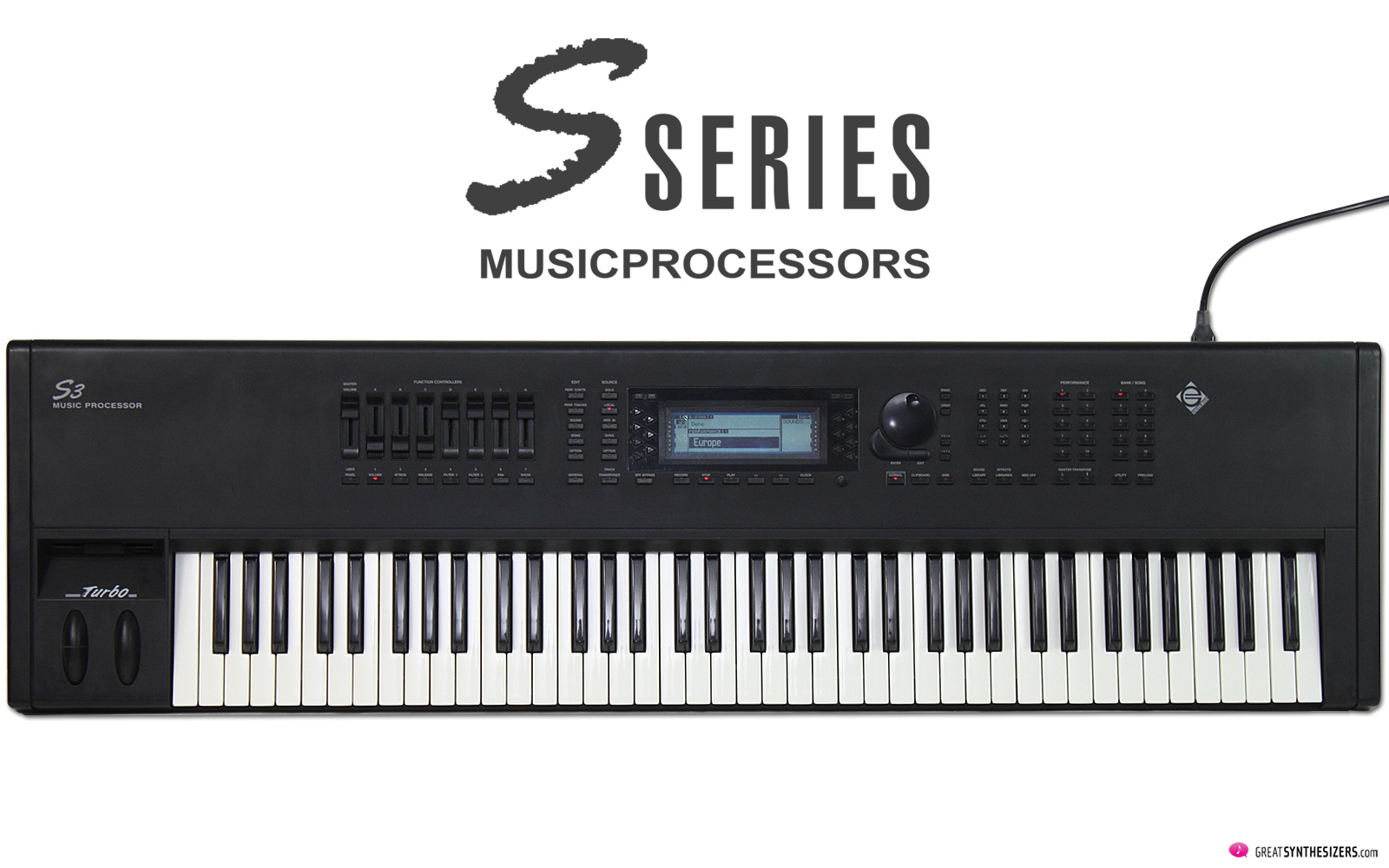
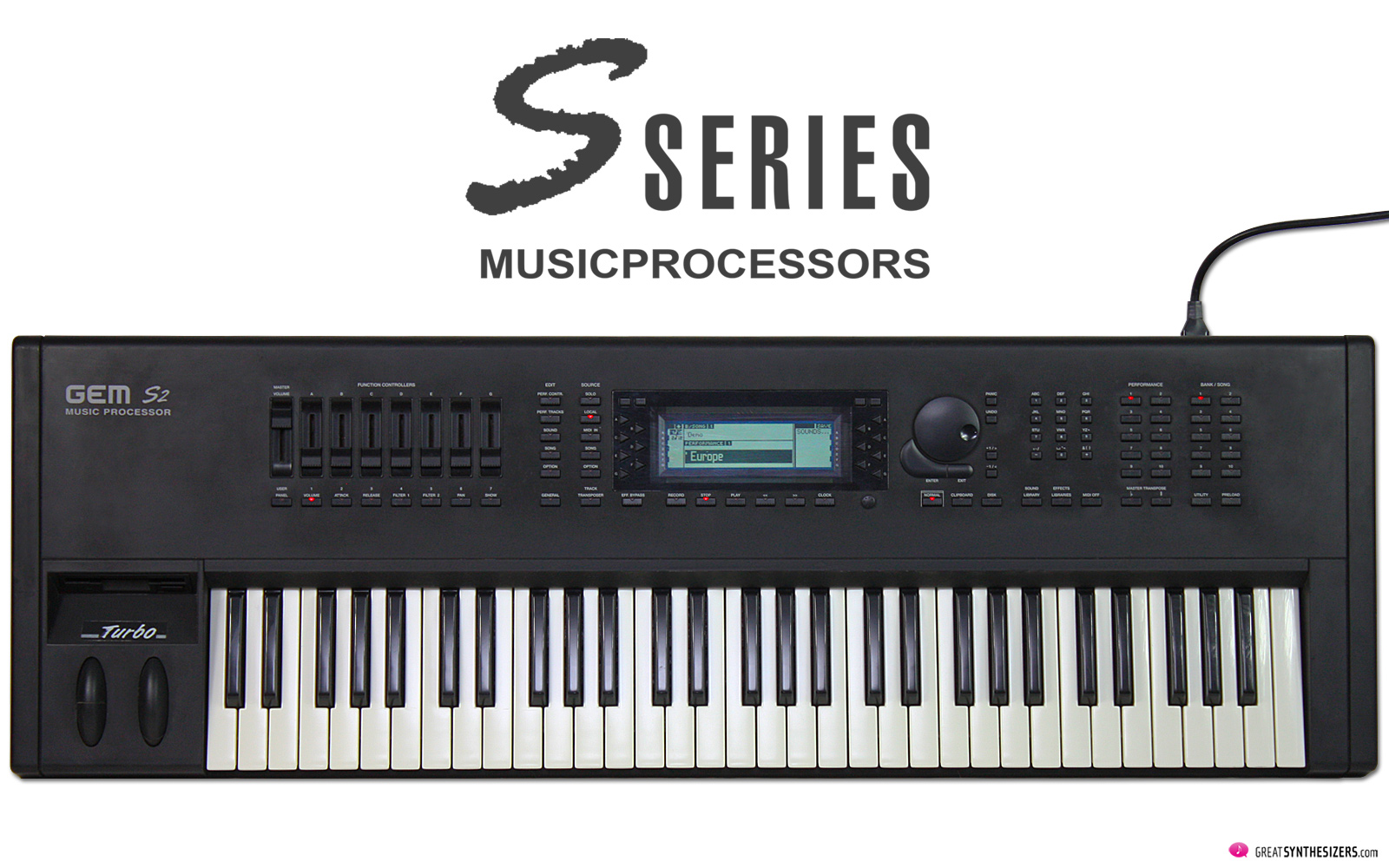
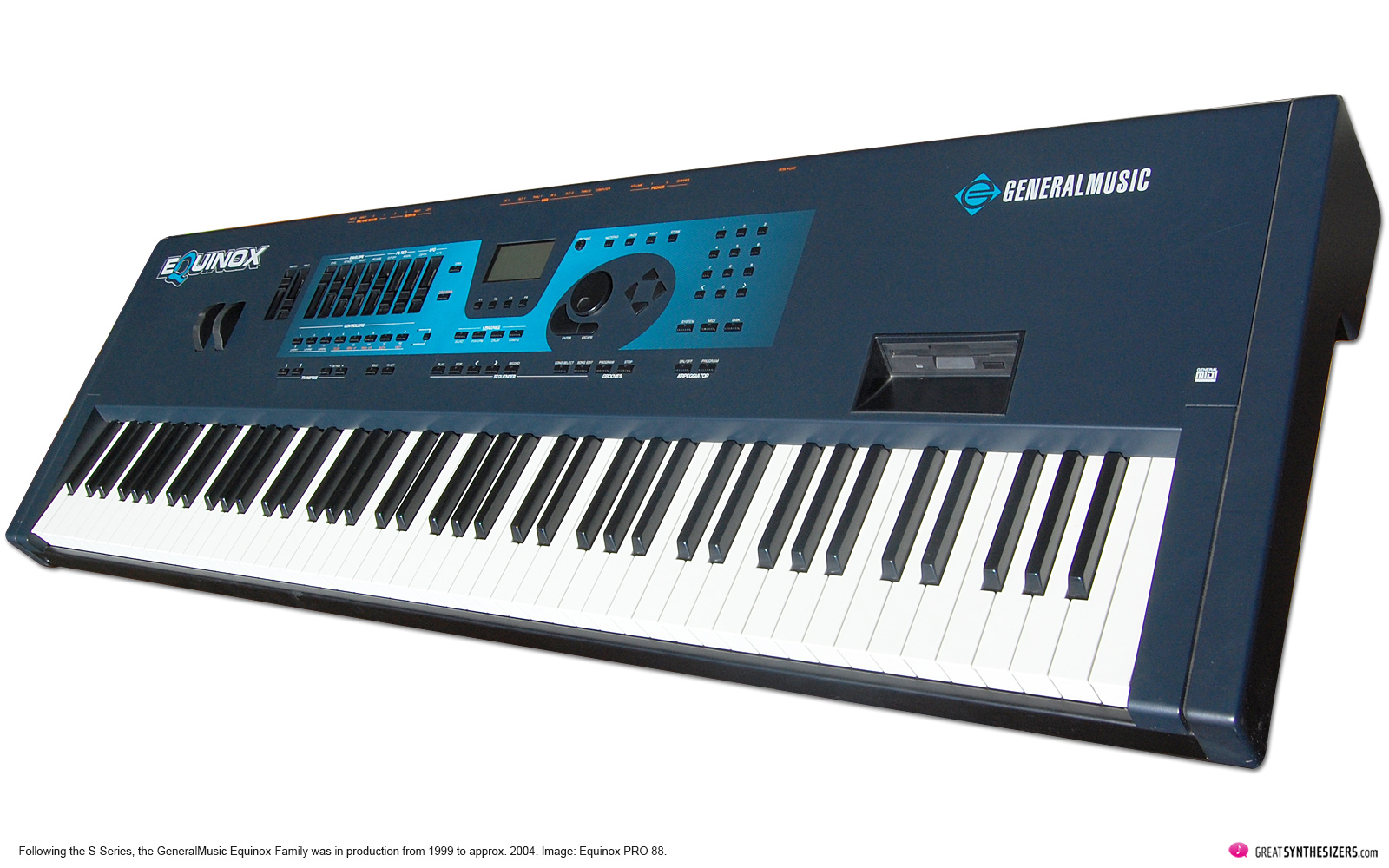
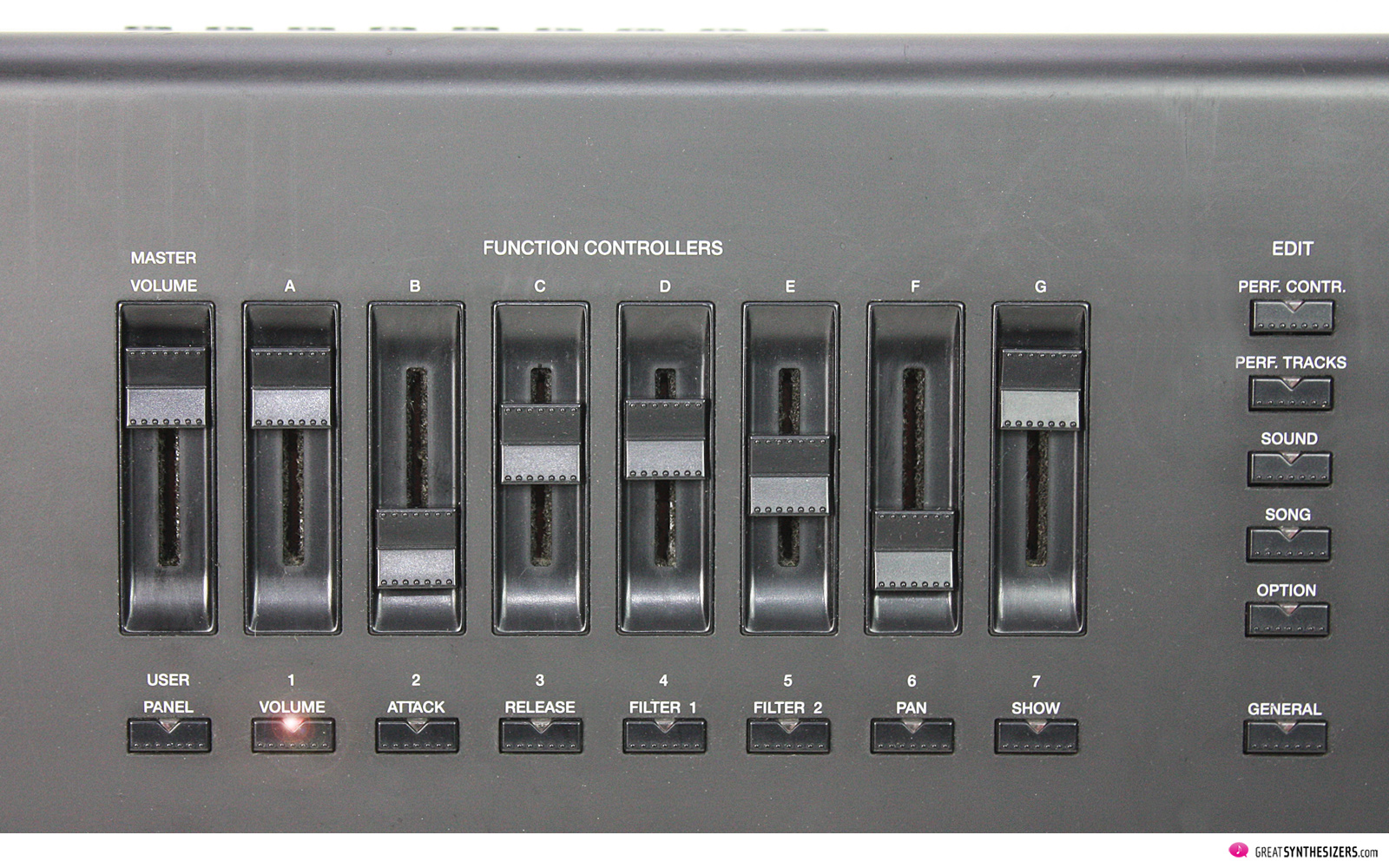
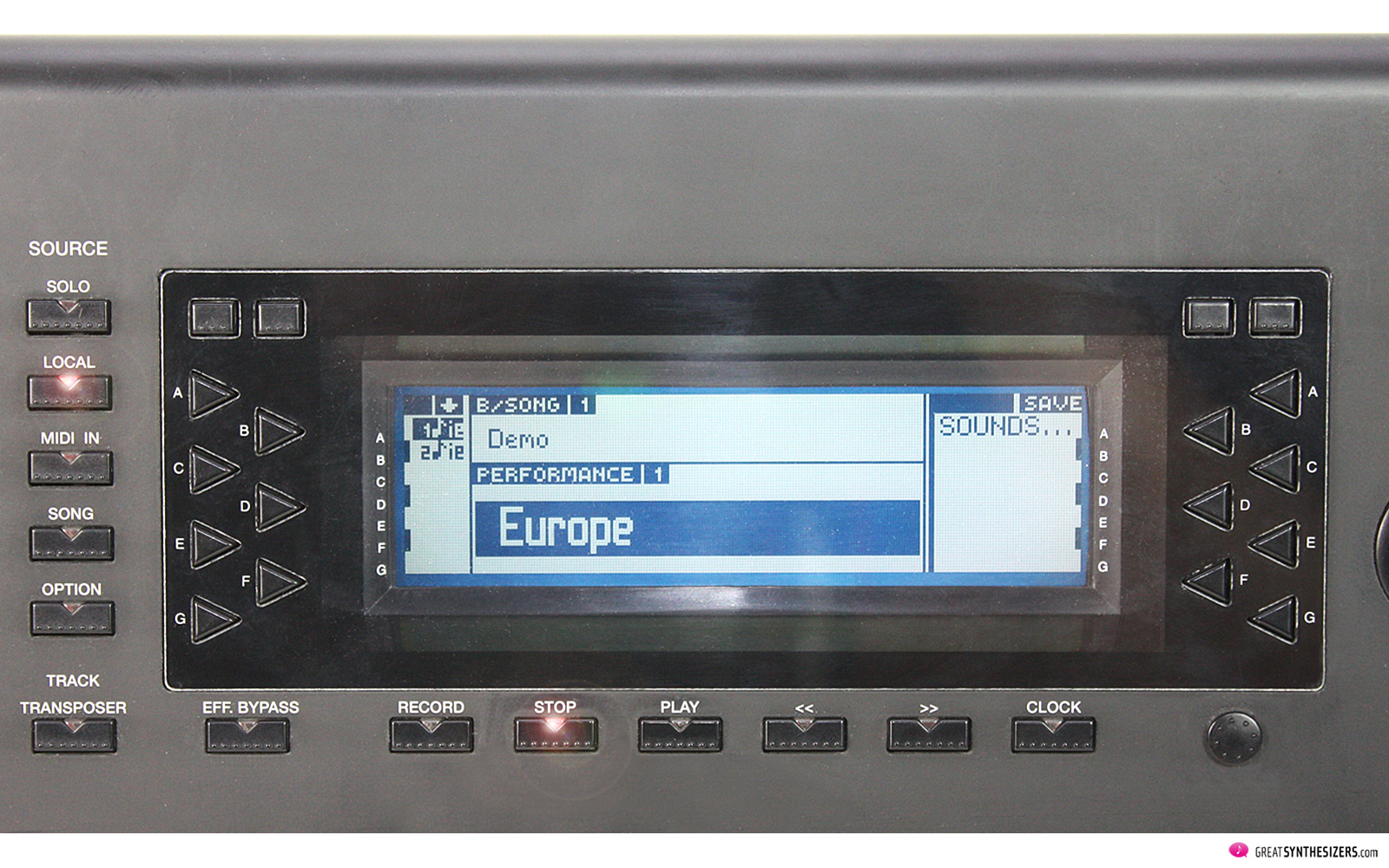
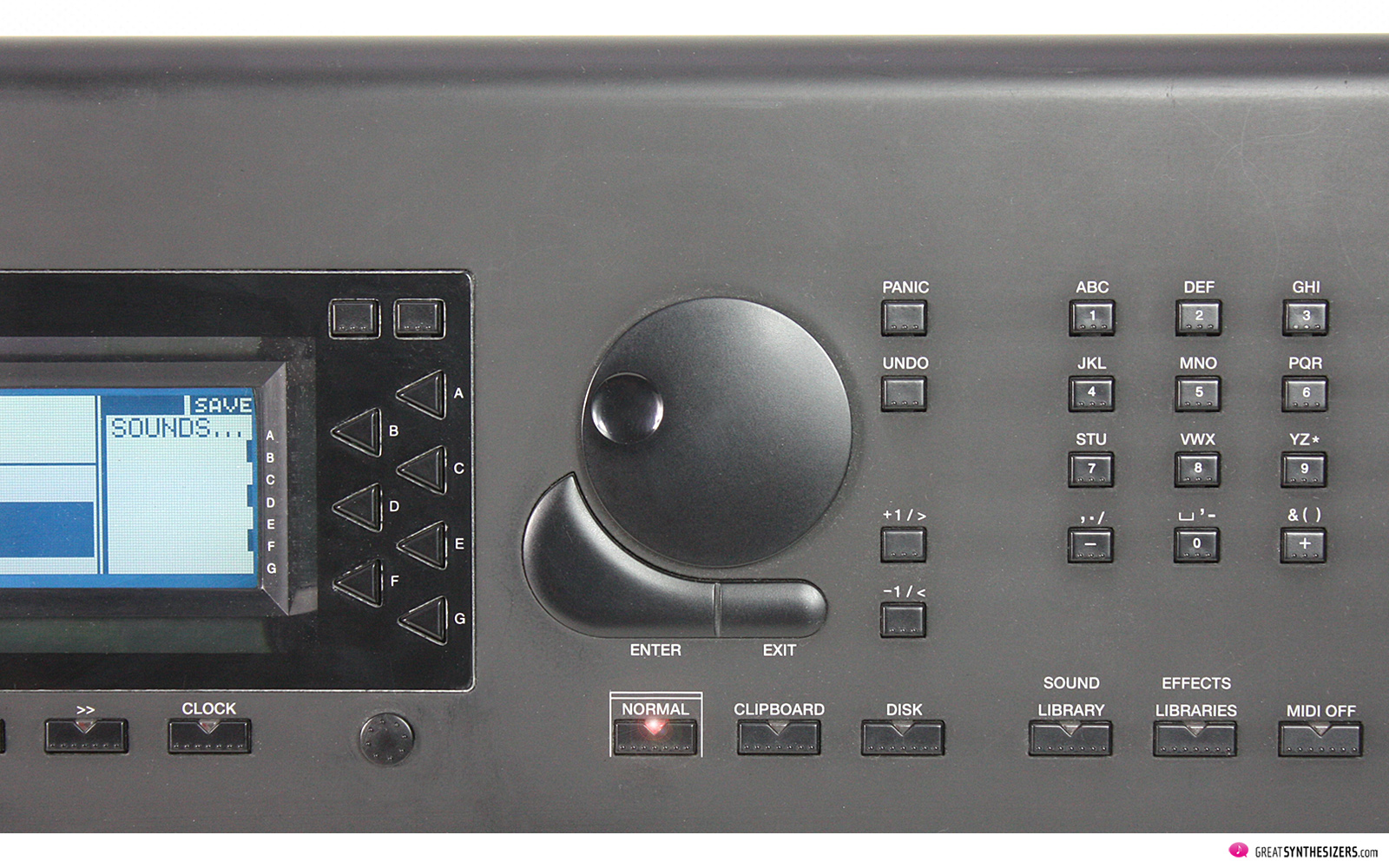
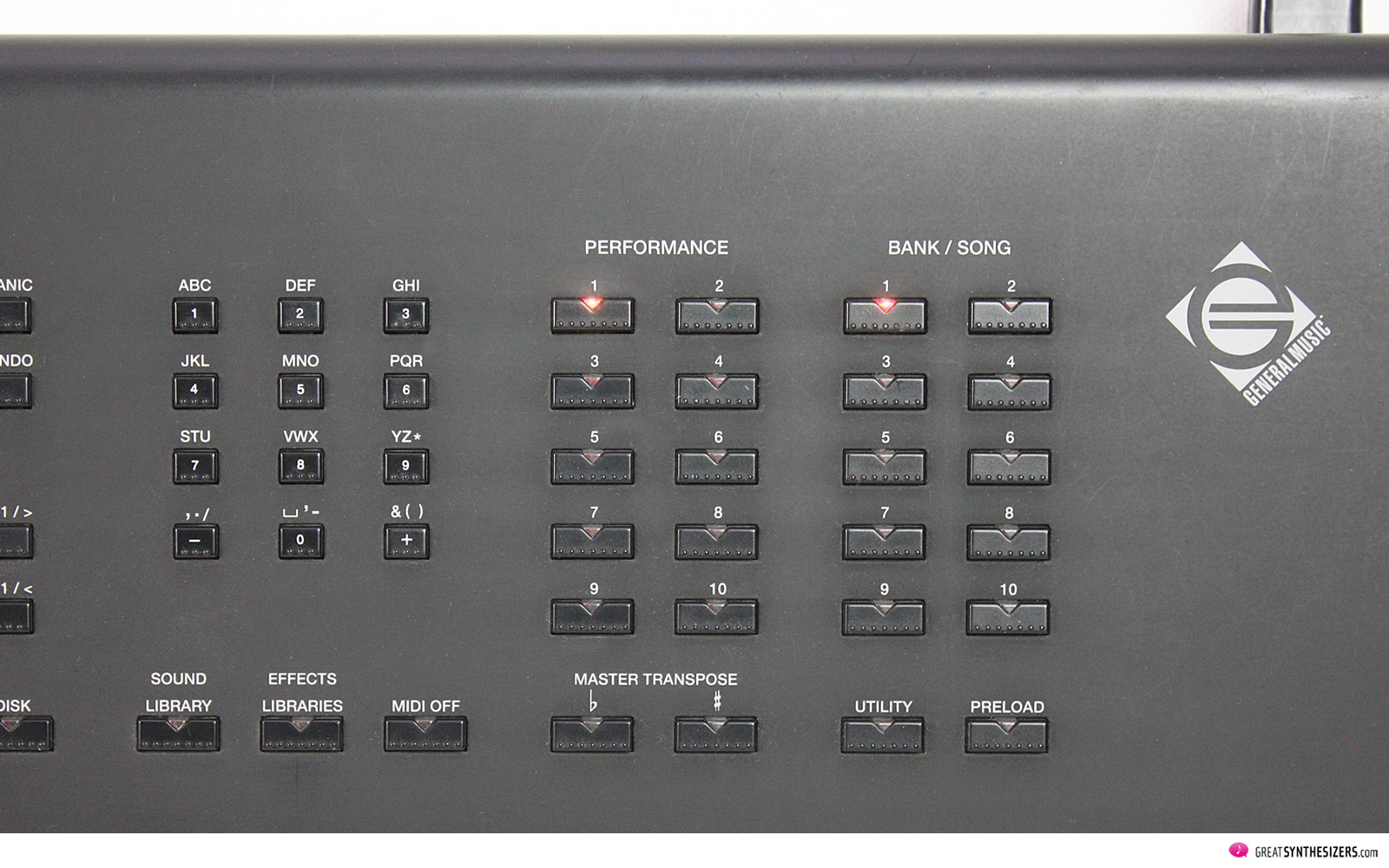
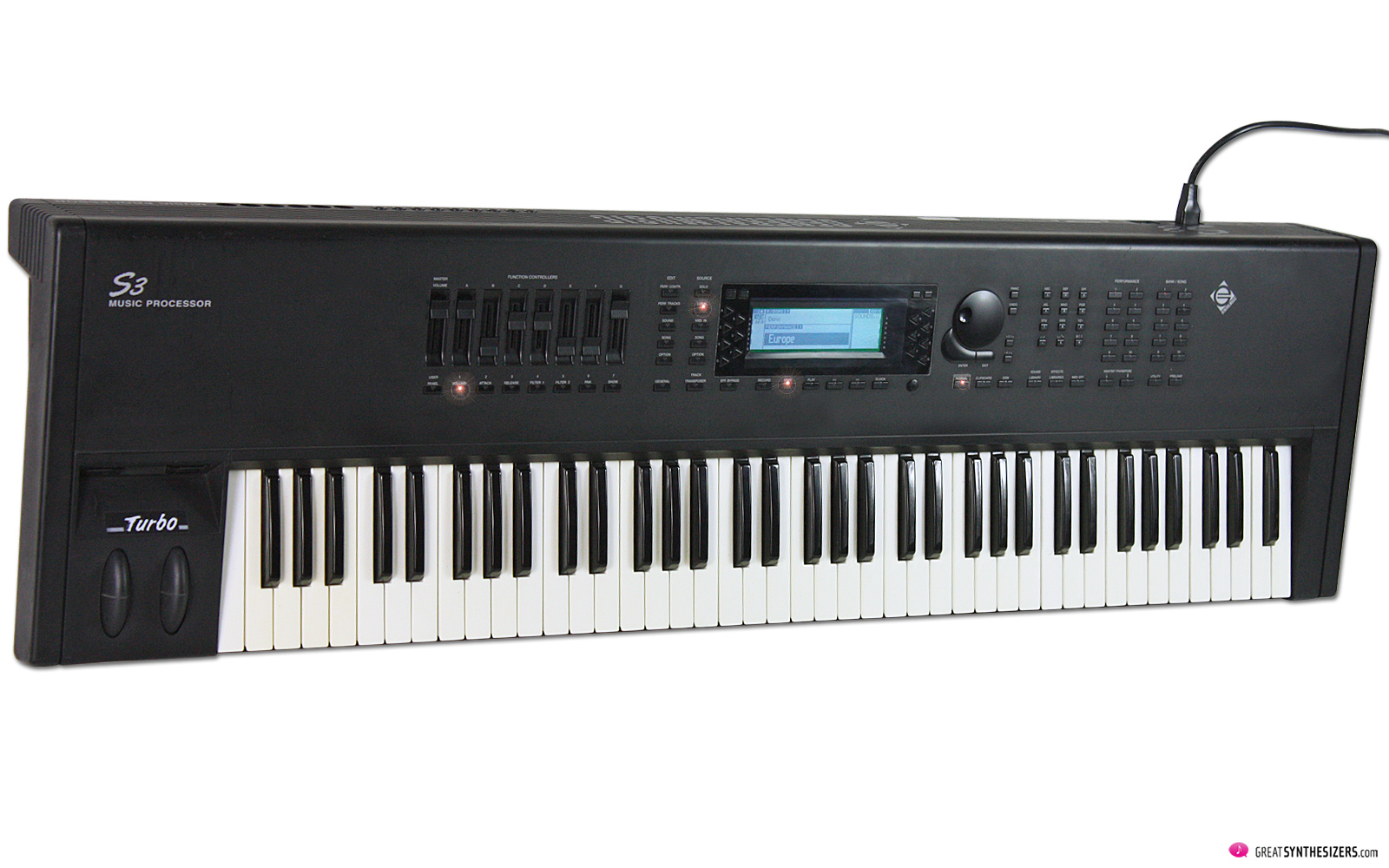
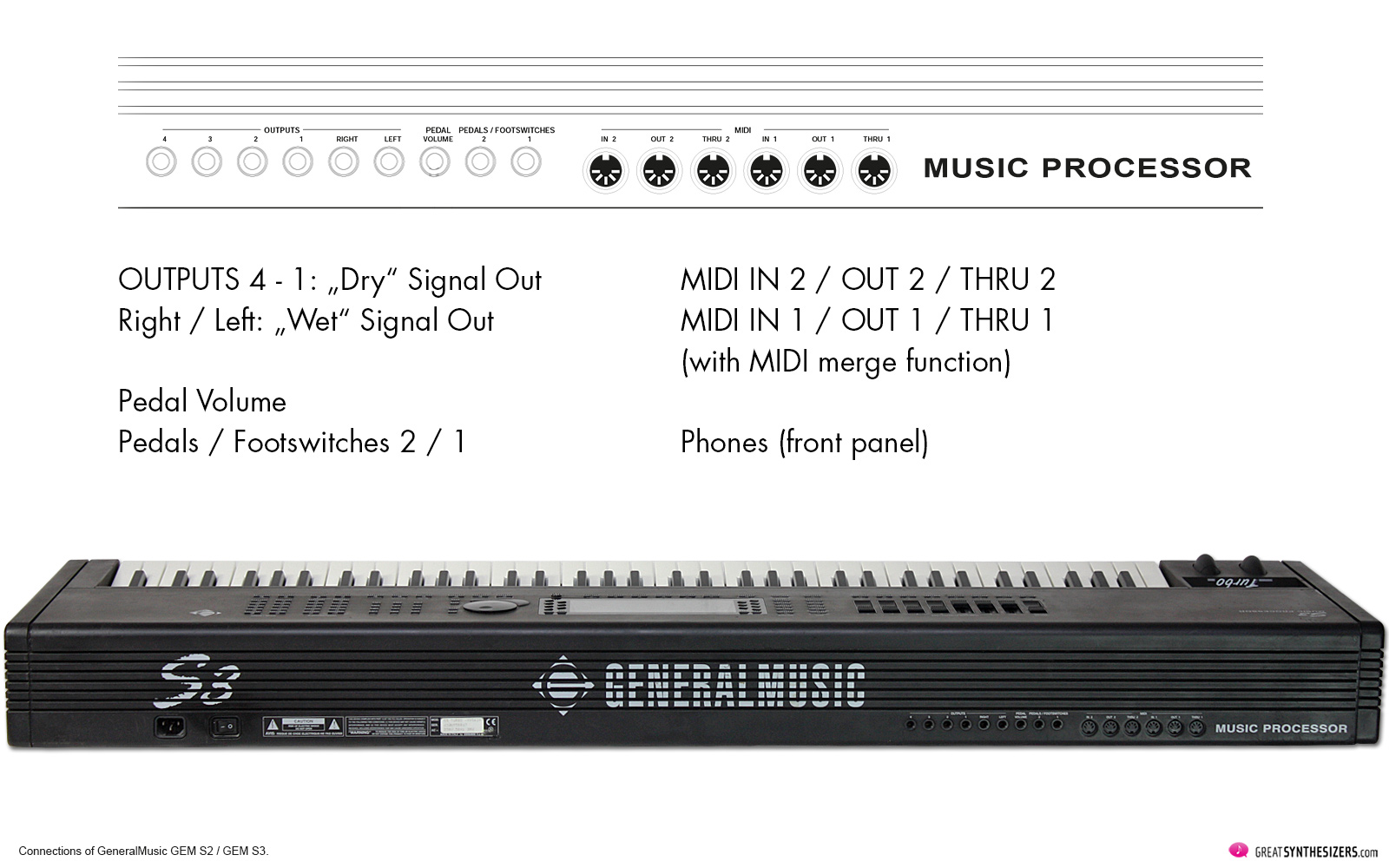
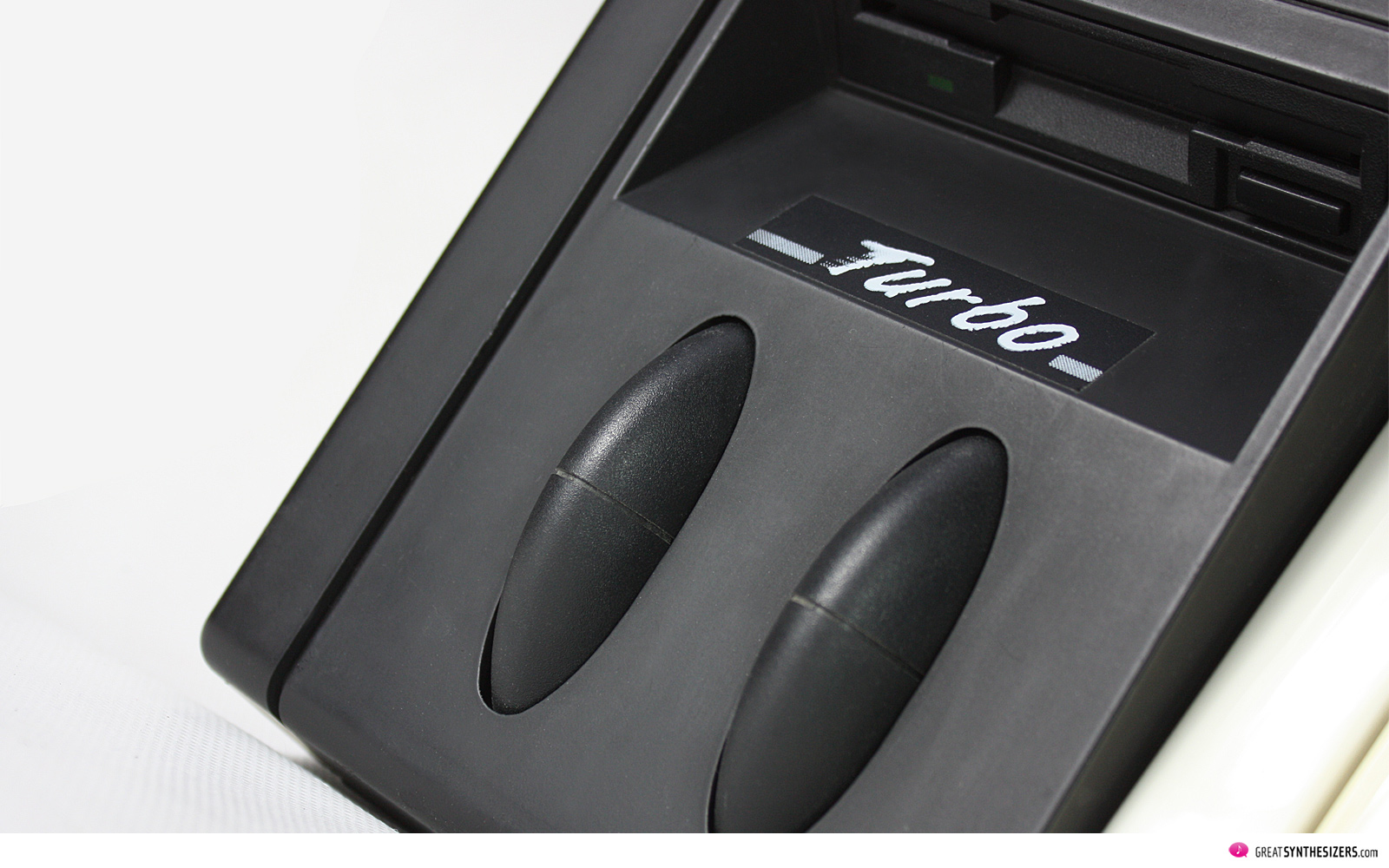



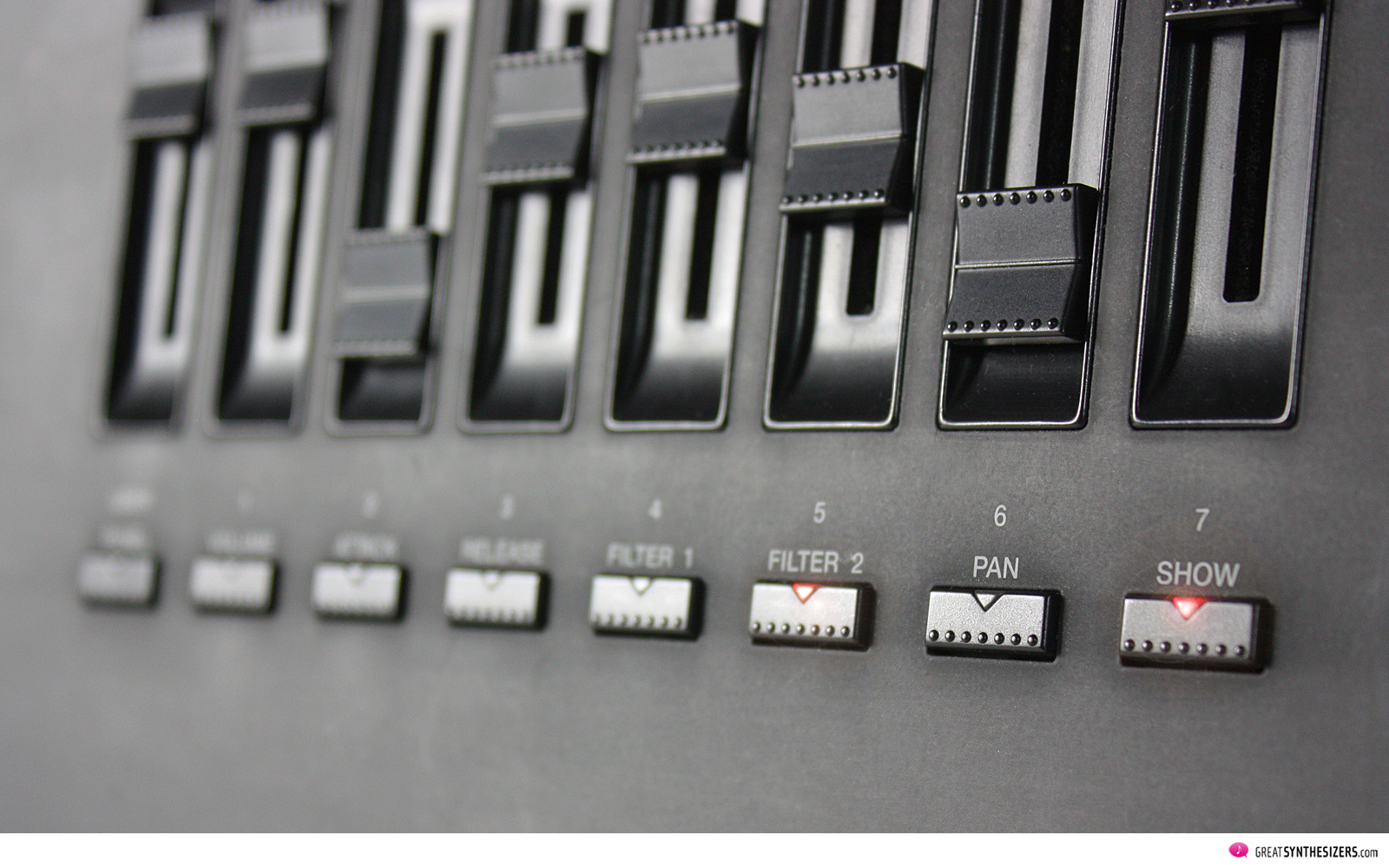
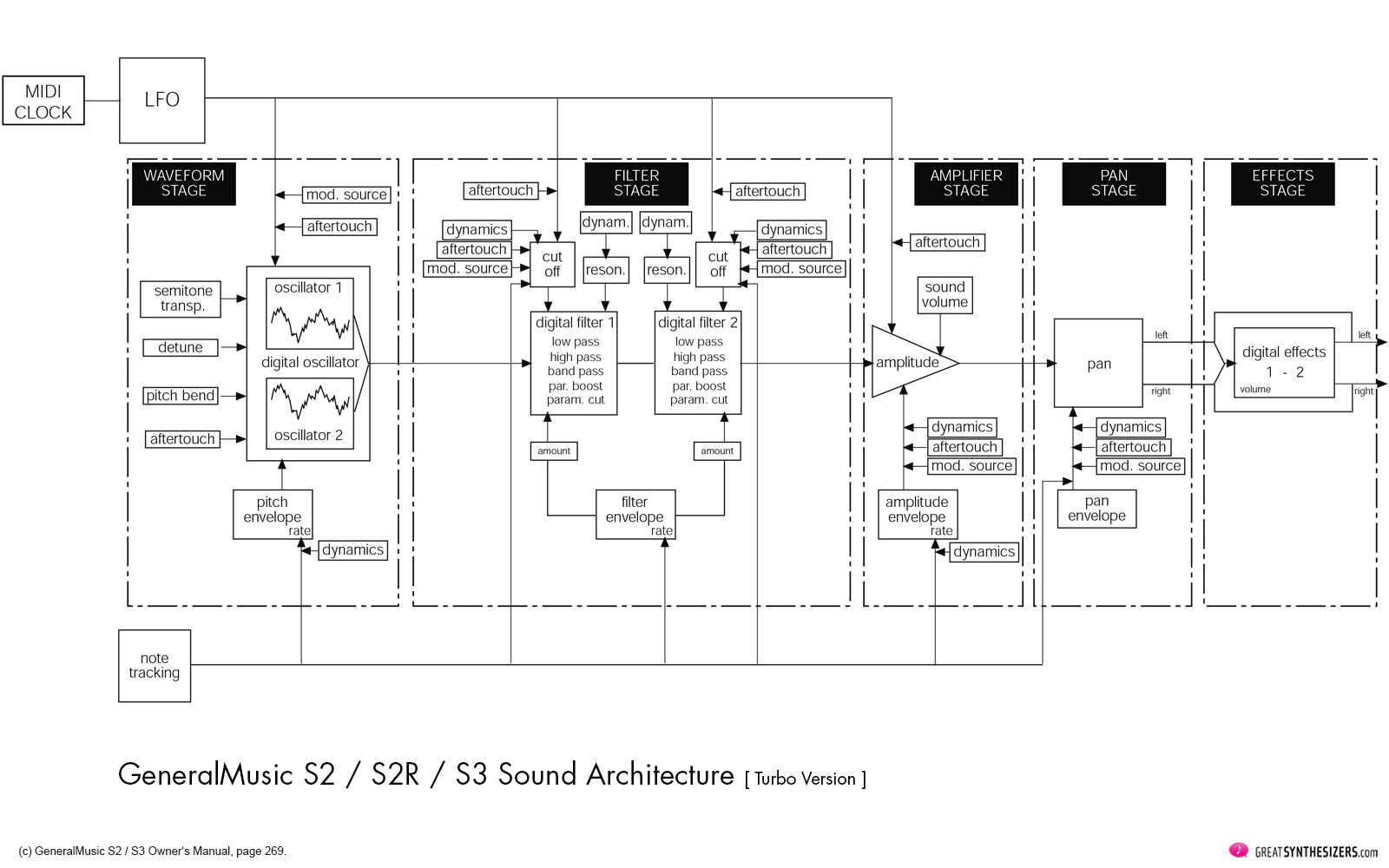
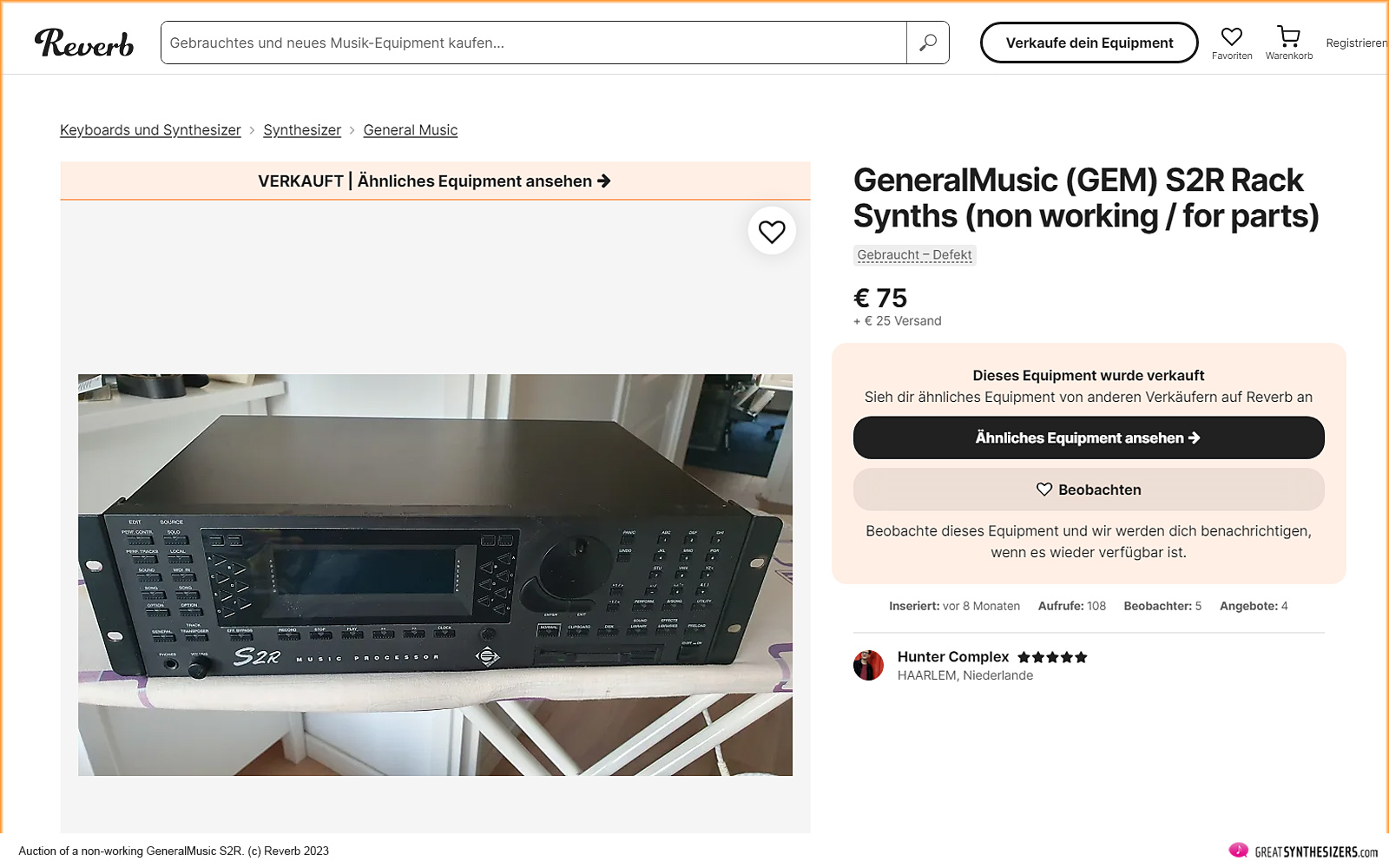
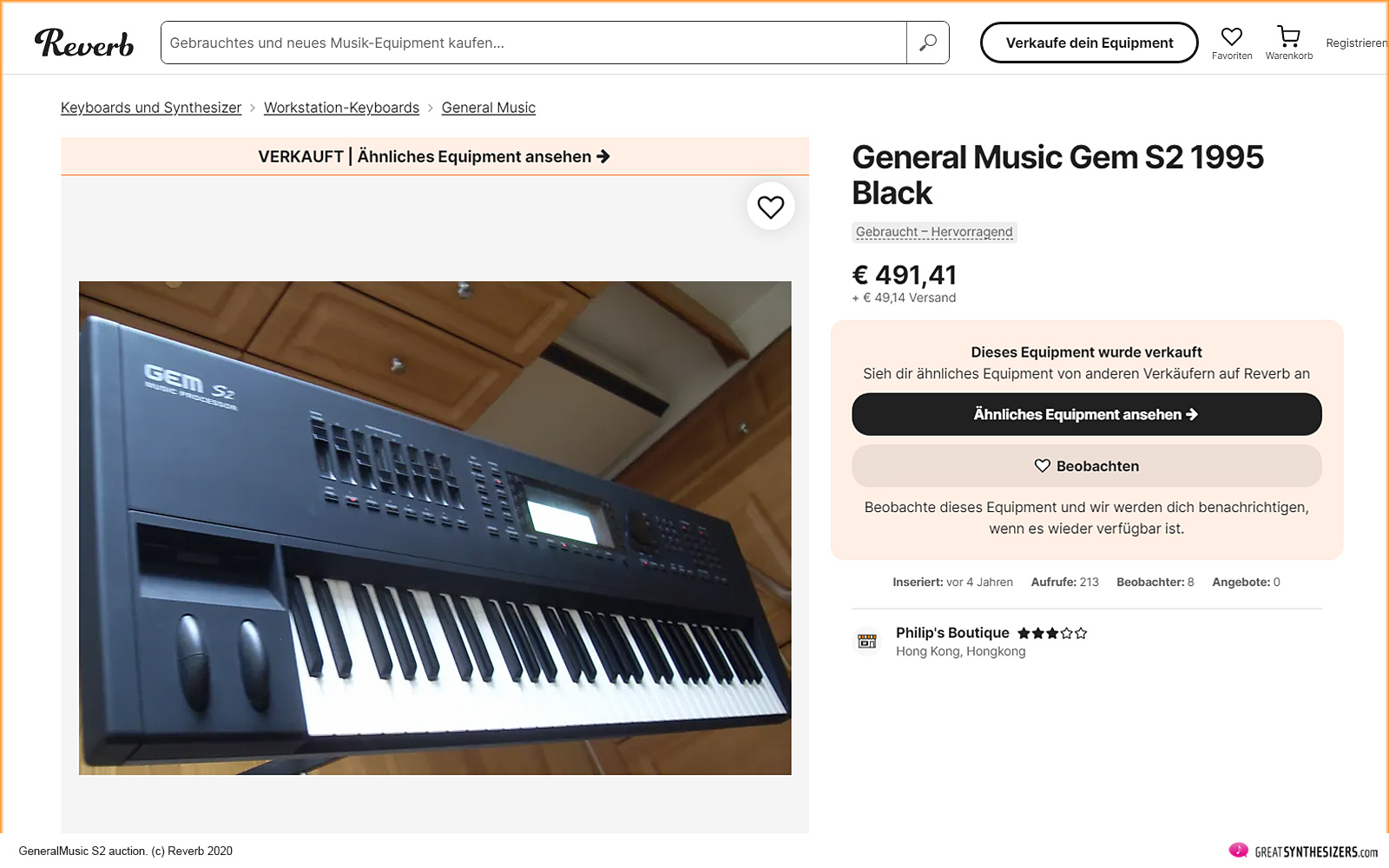

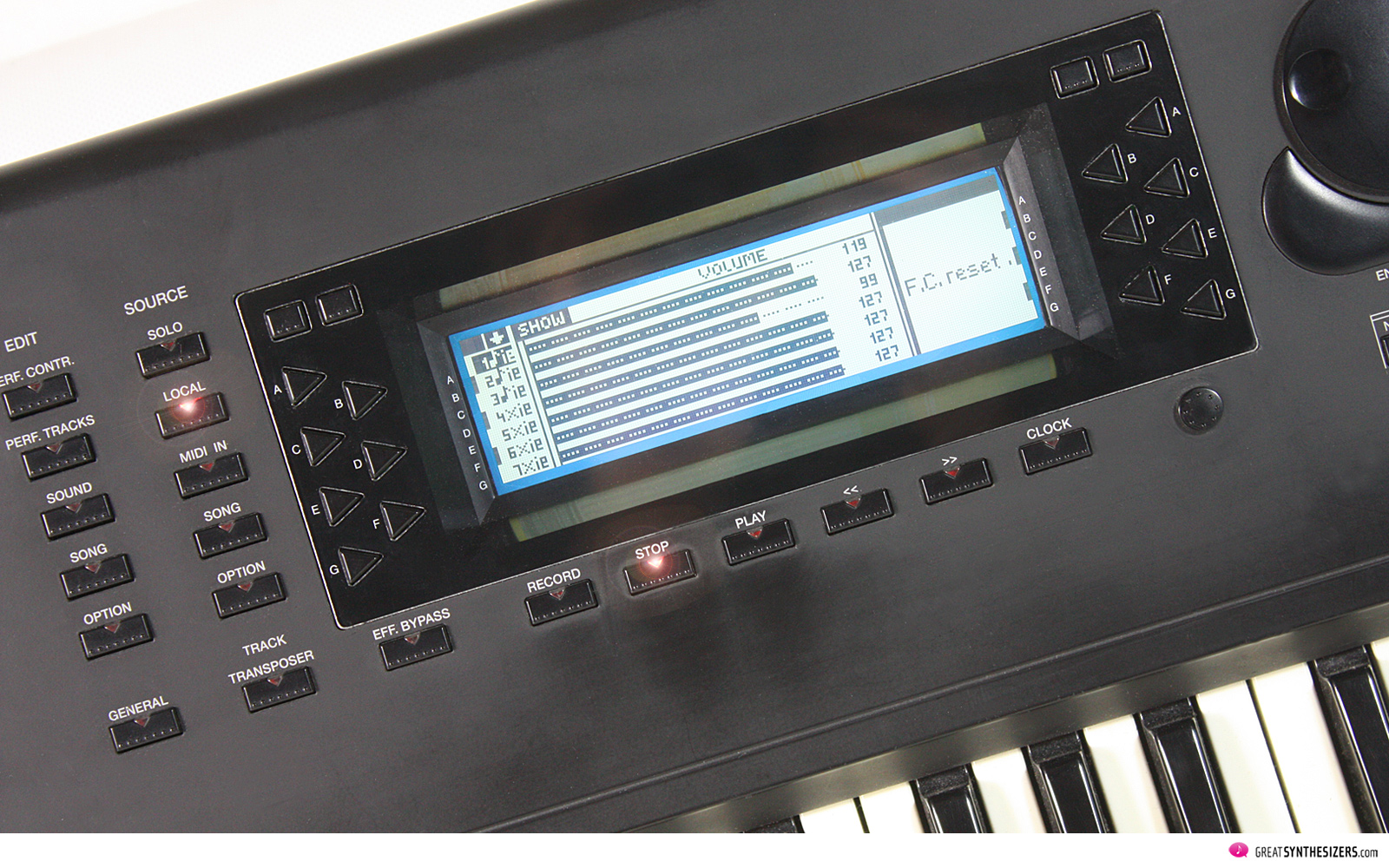
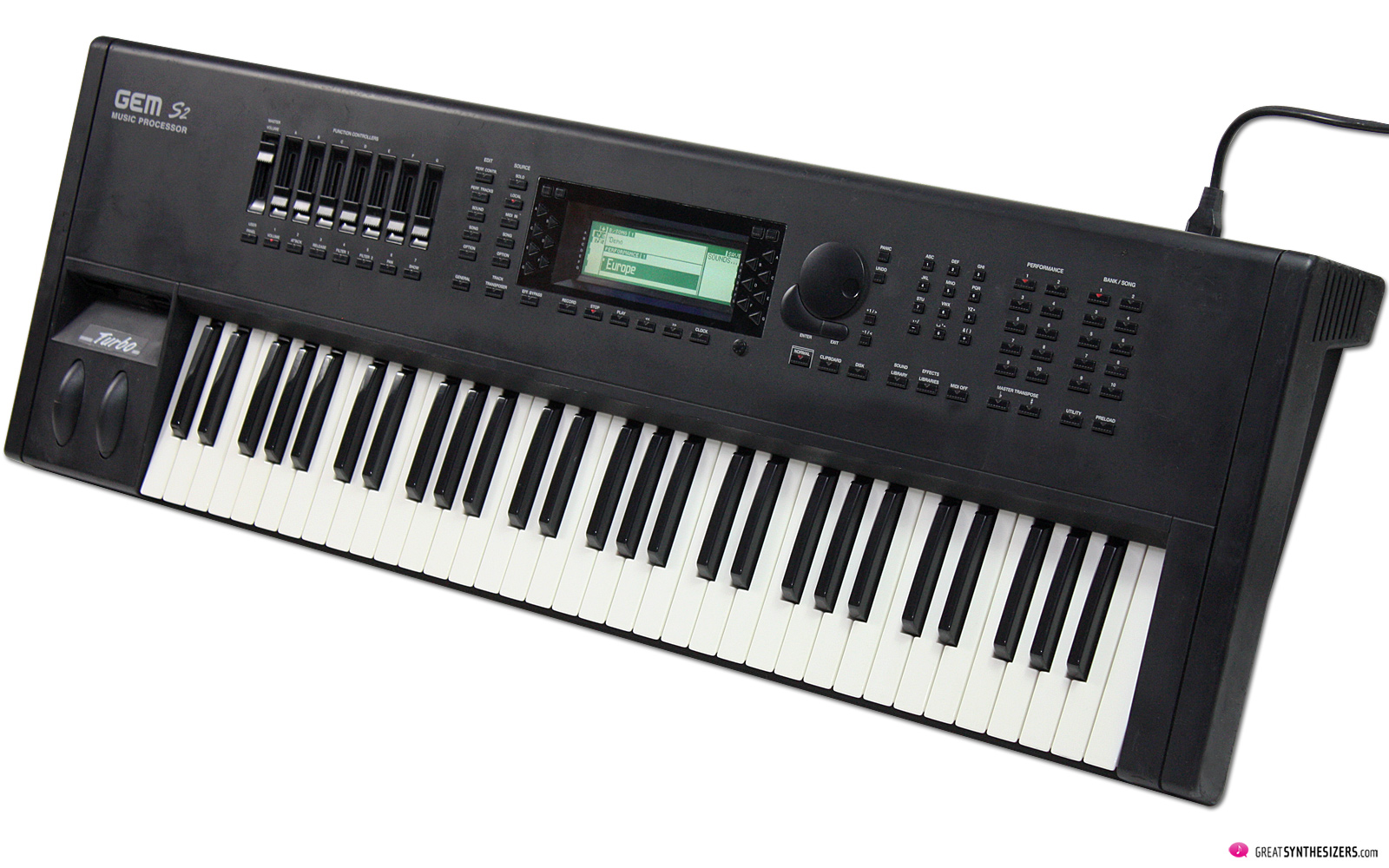
We at synthtools.co.uk have now released a new Arpeggiator for the S-Series and a new floppy disk tool kit, more will be available soon.
… great news!
Hi Chaka
There is no OS on floppy, because its in Eprom on the motherboard, so if battery is empty or removed, S2 still works, only time and date will lost after switching off and in Turbo version the contest of RAM disk, if installed.
Most common failure is NiCad battery leaks in Turbo version, destroying chips and PCB traces next to it. The chip on the right of the battery, ic54, 74HC245 is a gate to the LCD, so in most cases there is disturbing or no LCD image at all, only light or flickering. The chip next to ic54, ic53, 74AC32 is partly there to access the OS Eproms, if they are bad then the synth can not boot.
In both situations you have to clean up the PCB and remove all infected ic’s by cutting them away (clean underneath and inspect traces under them) even if they are working, put good quality sockets in place where you can put new ic’s in it, also inspect the traces to them with a multimeter.
Search for s2 s3 repair, there are some active …
The S3 got the best synth key feel. Fast, light and smooth. Aftertouch, very consistent. The polytouch is simply in another league from others. As a master board, alone, it does a remarkable job.
In 1993, when I was 36 years old, I purchased an S3 primarily for church use. I have been using it continuously ever since, in various venues, and its versatility, depth, and intelligent simplicity in design continues to impress me. At that time I also purchased, for $20, the Hammond B3 sound, which was very realistic. I wished I could’ve utilized all of its features – but alas, raising a family and pursuing a career took precedence. Obviously, modern synths are in a class all their own (digital technology, USB access to computer sounds, and Gigs of memory); yet, when I play a modern synth, I’m left feeling cheated when I compare them to the capabilities of my S3. Thanks for the article – I always wondered what happened to GEM; maybe they were too far ahead of their time? Keep up the good work!
… thanks for your comment. I’m also still (very) impressed of the GeneralMusic S2 / S3 (have got a few of them). They are available for a mere 200 / 300 Euros/USD these days. They are beautifully made and full of musical expression/excitement. Leackage of the internal battery and failures in boot procedures are the two main technical problems of the S-Series these days.
GeneralMusic closed its doors around 2009. All remaining instruments and synth components (dating back to the glorious Elka Synthex … Elka and LEM were also part of the company) were then bought by a northern business man. Most of the GeneralMusic spare parts are now stored in a warehouse in Finland.
Thanks for the contributions Theo, as well as other commenters! I have my sights set on the GEM S2 to use as a masterkeyboard, due to the polyAT and revered Fatar TP/8S keybed (the internal synthesizer is a plus as well).
Probably a long shot, but if anyone is using an S2 or S3 (Turbo included) with a DAW, can you tell me if it sends all MIDI velocity values of 0-127? I’ve found that even good feeling keyboards are sometimes missing a lot of resolution in between (i.e. unable to ever register 105-109 velocity).
It seems like GEM went all out on the S-series (to correct an earlier poster, the SX does not have polyAT/release velocity, just the S and Turbos). So I imagine there’s a good chance they have full resolution.
Sad how ill-fated they were as a company.
Hi Theo – this webpage is a great resource.
Do you know which brand of 3.5″ disks are best? I have one (1) Kao 2mb floppy that works for backing up sounds. But I need more. Not sure where to find!
I tried some other brands that I have around the house, but none worked except the one KAO that came with the unit. Bought it about a month ago.
Hi Dave, my name is Eddie. I purchased my General Music sx2 may 19 1995. It worked great all these years and just a few months ago my navigation data entry was lit, but not displaying anything. Took it for repairs and founded out the battery had leaked…got it back, the screen light up , but no infor is displayed…how do I RESTART? I STILL HAVE AL THE DISKS THAT CAME WITH THE SX2 WHEN NEW. THANKS
Chaka my name is eddie and what you`re saying sounds like my sx2 . I wonder if you know of some repairs shops that can repair my sx2 and thanks, eddie.
What does it take to resurrect the S2 or S3 General Music turbo keyboard ? The comments and reviews on this quality instrument clearly indicate that it should be returned to the market place. Having become an expert orchestrator over the years using this keyboard, I would gladly purchase at least 5 of them in excellent condition if I could find them in the US, Italy, Finland or any place on the planet, just to teach and pass on my music orchestration skill sets to willing students.
If anyone knows how to encourage the keepers of the technology for the S2 or S3 Turbo General Music Keyboards, please let me know. I will gladly illustrate the extensive capability of this instrument to persuade re-production.
Guys I have had the GM S2 Turbo model since it was release and only now I’m trying to use the sliders for external CC control but can’t seem to make it work the way I need it to work.
I don’t see that’s possible. I was hoping to program each slider to a different CC for VST instruments in Cubase Pro 12 but the only way it seems to work is if I program each slider to a different CC but only if you press the button under each one (1-7). Is there a way to simply program each slider as it sits in USER mode without needing to mess with the buttons below them?
I tried it trying to control a Spitfire audio strings VST. I can only get one of the slider to work on one of the VST controller. If I try and program a second control in the VST with another slider now the first and second control work when I move one of both of the sliders. Weird. The manual doesn’t indicate that these sliders are designed to work for External midi CC controllers but it’s mentioned on this page as a feature. Maybe I’m doing something wrong?
Thanks guys
Chris